Regardless of what one thinks of nostalgia—a toxic force or a pleasant refuge from the chaos that is existence—there’s no denying its significant role in shaping and guiding our pop culture. Rather than simply rallying against it, we must, from time to time, acknowledge it and evaluate its accuracy. The launching of X-Men ’97 gives The Spool a unique opportunity to look back at ’97’s progenitor, the early 90’s series X-Men, also commonly known as X-Men: The Animated Series.
However, this is not a task for one person. An objective of this size requires a team-up, in the Merry Marvel Tradition. Tim Stevens, The Spool’s steadfast TV Editor, whose stoicism conceals a maelstrom of doubt and rage, much like ruby quartz holds back optic blasts, tackled the first half of the series. Then, Justin Harrison, our near-feral writer with a gift for mentorship and a head full of implanted memories, closes things down with his take on the second half of season 3 and all of seasons 4 and 5.
With that, there’s no time to waste. Hop in the Blackbird and come with us for a look at the highlights—and occasional lowlight—of the X-Men!
Season 1
The Best
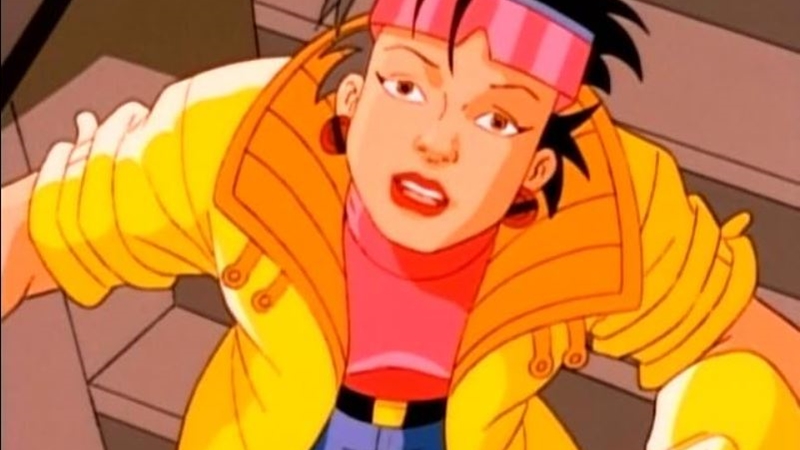
Episodes 1 & 2: Night of the Sentinels
The idea of launching a cartoon about the X-Men must have been daunting. The source material was already so deeply laden with continuity that even experienced comic readers might experience a bit of cold feet about jumping into the title for the first time. So the challenge becomes how to introduce an audience of predominantly children to this cast of characters in a way that makes sense, doesn’t bore, and might also earn approval from established fans.
While not perfect, “Night of the Sentinels” maneuvers those pressures impressively. One of the things it does best is nail the sense of danger life as a mutant carries, as well as the confusion and fear even well-meaning non-mutants experience with these new superpowered beings in their presence. Jubilee (Alyson Court) does well as the audience surrogate, conveying understandable levels of fear and frustration.
There are some rocky bits, especially in how the X-Men introduce themselves. To be fair, though, the X-Men of comics under the pen of Chris Claremont had a similar tendency to announce their powers or certain grandiose nicknames. So, while clunky, this element is more loyal to the source material than expected.
The show’s decision to kill off a team member in its premiere episodes is an admirable indicator of stakes. Unfortunately, making that victim Morph (Ron Rubin) undermines the impact. He has a laugh so grating that it is undeniably cartoon villain-coded. He leaves the viewer both annoyed and half-anticipating the moment he’ll betray his teammates. As a result, his sacrifice doesn’t quite hit as hard. That the series would never prove as willing to take its characters off the board is a retroactive knock against this bold opening.
While very reflective of their established comic book relationship, Wolverine’s (Cal Dodd) rage at Cyclops (Norm Spencer) doesn’t quite work either. The problem isn’t in the performances but in the show’s storytelling. Wolverine lays Morph’s death and Beast’s (George Buza) capture entirely on Cyclops’ shoulders. However, the flashback clearly shows Cyclops is a.) the only consistently effective force against the Sentinels and b.) forced to retreat by other team members, not of his own volition.
These are minor quibbles, however. What the season-opening two-parter needed to do—introduce the characters, establish the world, and tell an entertaining story—it does with surprisingly little sweatiness.

Episode 4: Deadly Reunions
Don Francks’ hyper-aggro take on Sabretooth is excellent. There’s something wonderfully over the top in his obsession with Wolverine and the snarlingly theatrical panache he puts on every syllable he says. It’s one of the earliest examples of the show improving on the source material through a voice actor’s choices.
However, the episode’s real star is Magneto (David Hemblen). Hemblen gives the villain the right mix of charisma and madness to let viewers understand why so many would find him persuasive and why he’s so incredibly dangerous.
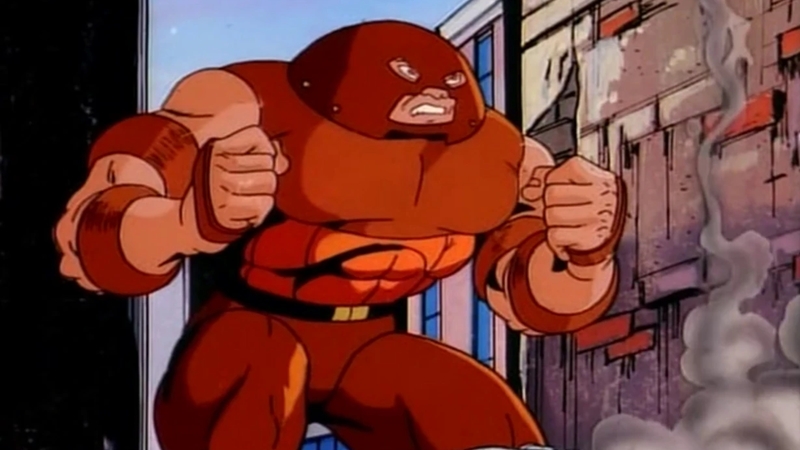
Episode 8: The Unstoppable Juggernaut
While future seasons would have a far looser serialized nature, Season 1 is relatively tightly connected. This installment is the season’s biggest exception, a villain showcase for Juggernaut (Rick Bennett). It’s a loud smash ’em up in the grand tradition of comics, with Juggie leveling buildings with abandon, all in the name of robbing a few banks. The episode also introduces Colossus (also Rick Bennett), a fan and personal fave.
Sometimes, you just want to see two mighty mutants—Colossus and Juggernaut, in this case—pound on each other and the world around them for 22 minutes. “Deadly Reunions” fulfills that hunger nicely. It isn’t entirely without depth, though. Juggernaut’s relationship to Xaiver (Cedric Smith)—they’re step brothers—is a good reminder of how messy the X-universe is. Additionally, it reinforces the necessity of found families for these heroes because those related to them by marriage or blood have often let them down.
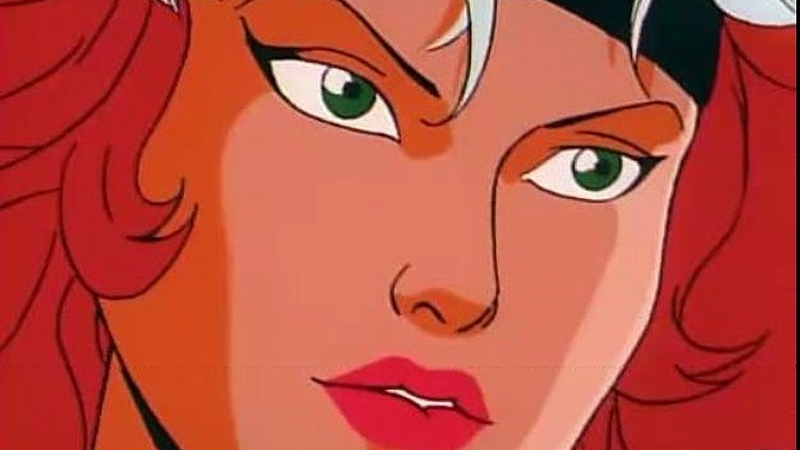
Episode 9: The Cure
Despite calling everyone Sugar, Rogue’s life was not especially sweet. Of all the tragic downsides of the X-Men’s powers, hers always felt the saddest. So when rumors of a cure for mutation begin to make the rounds, you can understand why she jumps at the chance. After all, she can never touch anyone without stealing their memories and abilities or, if she stays in contact too long, their very lives. Why wouldn’t she want out of that situation?
If Cyclops never stops being a mutant, the most challenging part of his life is wearing awesome sunglasses. If Storm never stops, she, what? Has to keep being incredibly cool? But for Rogue, the reality is a lifetime devoid of physical comfort or intimacy. Then the episode piles on, revealing the cure is fake and Mystique (Randall Carpenter), Rogue’s biological mom, is behind it. Wolverine might be the X-Man most prone to whining about his tragic lot in life, but Rogue’s the one most deserving of those moments of self-pity.

Episodes 11 & 12: Days of Future Past
It’s probably showing too many cards too soon, but there’s no good reason to be cagey. These two are likely the best two episodes of the entire series. Throughout X-Men, the series returns to time travel and tragic alternate timelines. Every return to those wells suffers in comparison to this two-parter. All the dread, sense of loss, and hints of hope in the darkness done in those later storylines first appear and are done best here.
Additionally, it does one of the best X-Men tricks. In order to do the right thing and protect the future, the team has to protect someone who hates and actively seeks a government-sanctioned genocide of them. It’s everything that makes X-Men so compelling in a single story.
The Worst
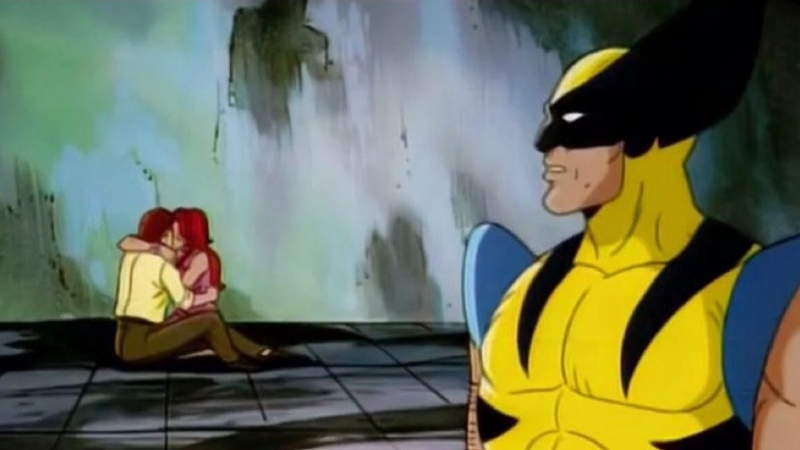
Episode 5: Captive Hearts
It isn’t that the Cyclops-Jean Grey-Wolverine triangle can’t be interesting. It’s just that it isn’t interesting here. Part of the issue is that the series still hasn’t gotten a handle on Wolverine. It’s possible to make him an ill-tempered grump who you also think is cool and deep. By this point, though, X-Men still hasn’t gotten Logan there. Instead, he mostly reads as a jackass who thinks it is fine to rip apart a guy’s car whenever he’s upset.
Moreover, Jean and Cyclops are clearly together and have been for some time. This isn’t a romantic rivalry; it is one guy wanting to break up a couple. Worse, it’s a jerk who feels so justified in that choice that he doesn’t hesitate to sulk so hard that he makes Jean feel guilty for his entitled attitude.
Perhaps if the episode didn’t spend so much of its focus on a Morlocks subplot that mirrors the comics but doesn’t offer any repercussions or tension, it could’ve served its “A” plot better.
Season 2
The Best
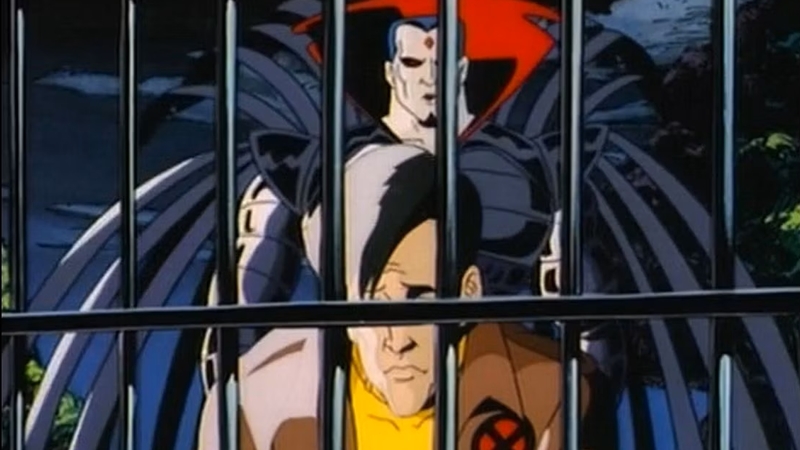
Episodes 1 and 2: Til Death Do Us Part
Remember how it felt like Morph was poised to betray the X-Men back at the start of Season 1? Well, that vibe turned out to be inaccurate. However, the show’s creators must have picked up on it because they bring back Morph here (a clone, actually) as an X-Men enemy colloquially known as Dark Morph. And yes, the laugh works so much better from a bad guy. Morph, however, is but a pawn in a larger game. The puppet master behind it all is Mister Sinister (Chris Britton), a villain as obsessed with Cyclops as Sabretooth is with Wolverine, although slightly less fun.
However, the episode’s real draw isn’t the costumed villains. It’s the everyday people who, despite President Kelly’s (Len Carlson) turn towards mutant rights affirmation, remain as angry and as bigoted as ever. It’s an insightful, if cynical, look at how even change at the top doesn’t mean the end of hate. Sadly, it often makes the hate all the more stubborn.
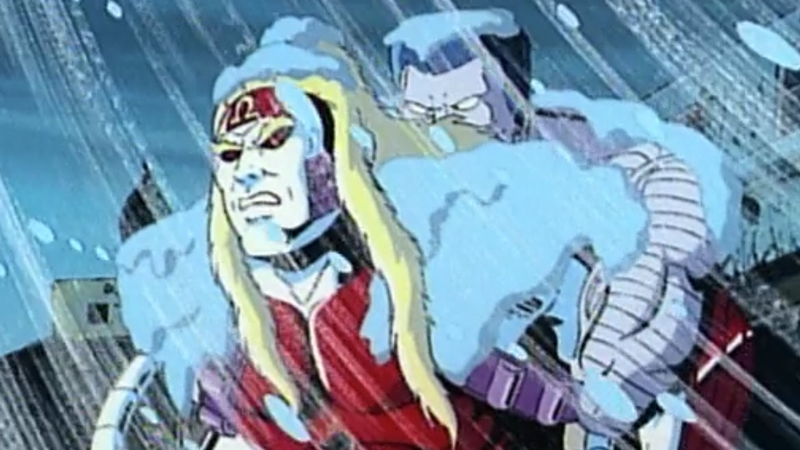
Episode 4: Red Dawn
Colossus returns! Omega Red’s (Len Doncheff) introduction! This international adventure brings Jubilee to Russia for another supervillain-driven punch-out episode. It is not as strong a showcase as Season 1’s treatment of Juggernaut, but it is still plenty of entertaining with a far creepier villain.
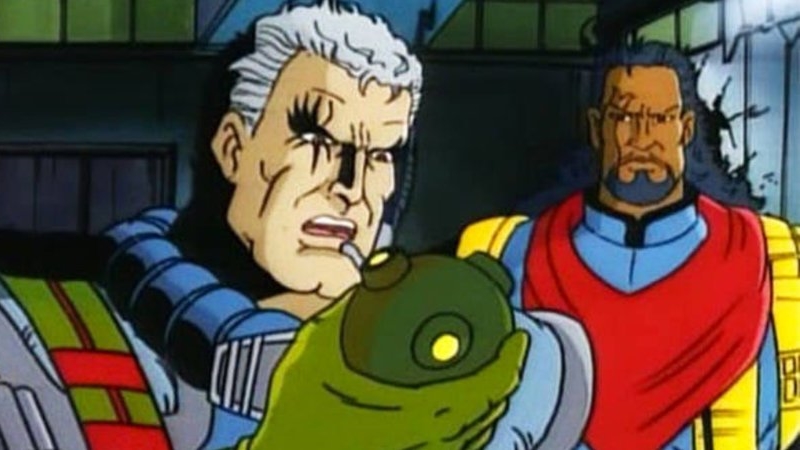
Episodes 7 and 8: Time’s Fugitives
Time travel runs wild as the X-Men fight to save the future. But which one?!
After his apparent success in “Days of Future Past,” Bishop (Philip Akin) returns to his timeline expecting a stable and happy future. Instead, the year 2055 has traded one threat to mutantkind for another. Away he goes into the breach once more, back to the past to fix things. Again. Unfortunately, in doing so, his actions echo into 3999, where Cable (Lawrence Bayne) sees his admittedly kind of bleak life unraveled by the changes Bishop has wrought.
While nowhere near as clean or compelling as “Days of Future Past,” the central conflict is a fascinating question. What does saving the future mean? Is it the right choice if one’s actions improve the next hundred years but leaves the 200 after that even worse? Do you roll the dice on the short-term and hope to fix things in that further future as it draws nearer? Or do you accept the near tragedy for a better far-flung future? Big questions for a Saturday cartoon, to be sure.
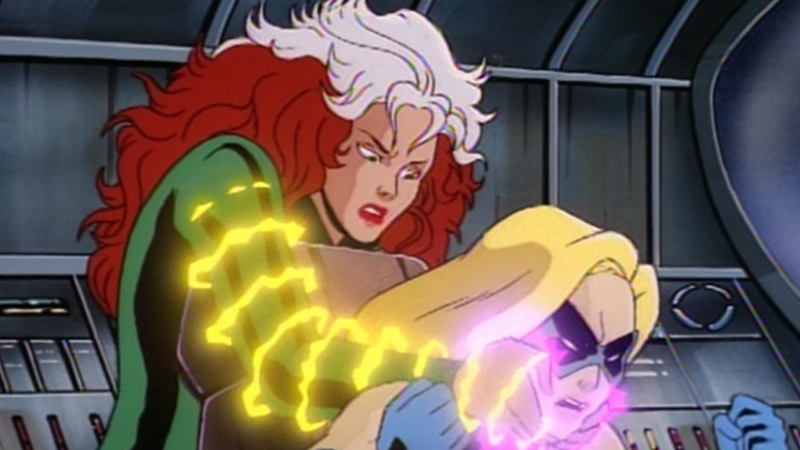
Episode 9: A Rogue’s Tale
This is the rare Season 2 episode that revisits Season 1 themes and events with a better payoff.
The episode complicates her in fascinating ways by revealing Rogue hasn’t always been a do-gooder victim of her mutant abilities. The irony of someone who briefly takes other people’s lives losing control over her own (and her physical body) is a thematically appropriate challenge and a plenty scary one, too.
Being the audience’s first encounter with Ms. Marvel (who modern fans more likely know as Captain Marvel) (Roscoe Handford) harms the story. It’s difficult to mourn someone you never met. That said, Handford’s voicework conveys the rage and sense of loss that animates Marvel into seizing control of Rogue’s physical being.
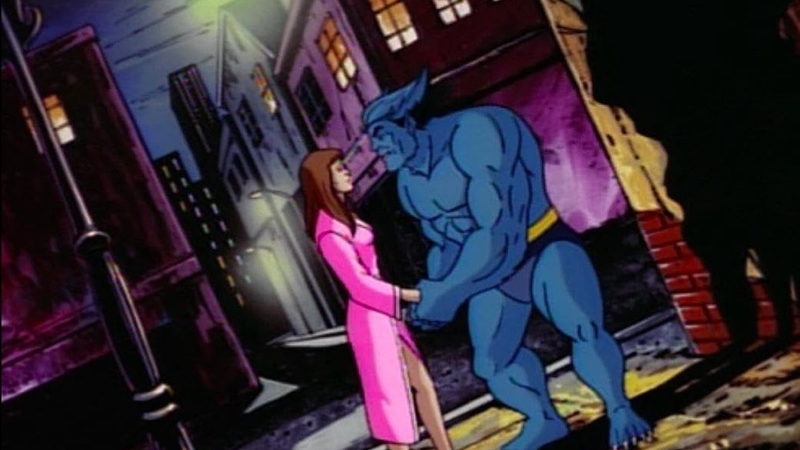
Episode 10: Beauty and the Beast
For much of X-Men until this episode, Beast had dwelled mainly in the background. He’d mostly been characterized as the blue furry guy who knows big words. In “Beauty and the Beast,” he finally comes into his own. Fittingly, the romantic Beast falls for Carly (Alison Sealy-Smith), a blind woman under his care. In time, she grows to feel the same about him. Unfortunately, her father’s disgust for mutantkind and the Friends of Humanity, a hate group, interfere.
In the end, Beast is forced to confront that for all his intelligence, agility, and love, some situations can’t be “fixed.” The series excels at wrestling with questions of hate and discrimination that superpowers cannot easily erase.
The Worst
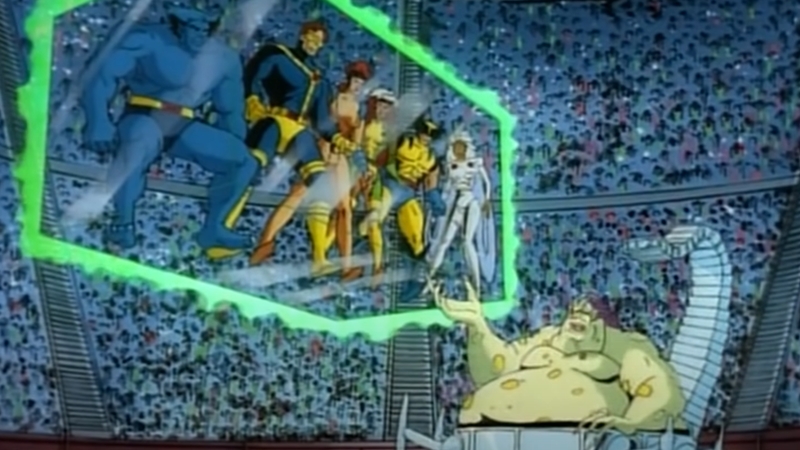
Episode 11: Mojoworld
Unfortunately, what worked on the page as a fun sendup of television trends gone awry doesn’t play well here. Mojo (Peter Wildman) feels neither dangerous nor fun, and none of the new characters introduced in this episode manage to generate any interest. This installment feels like the very definition of a filler episode.
Season 3
The Best
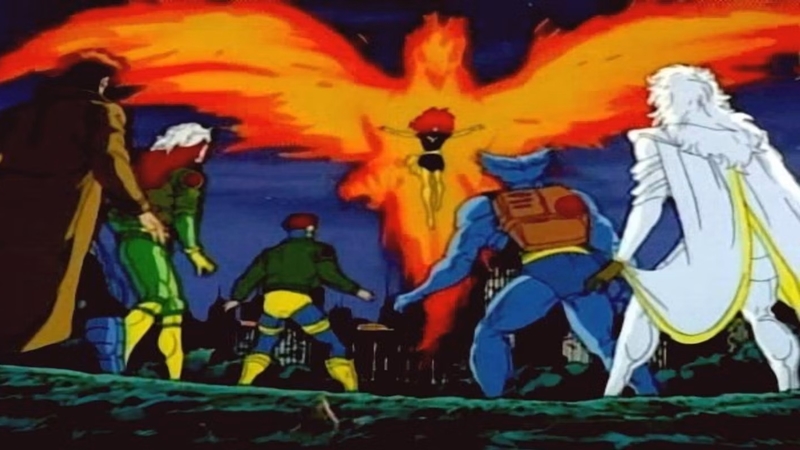
Episodes 3, 4, 5, 6, and 7: The Phoenix Saga
The “Saga” should not work. It does so many things that make adaptations feel dull and lifeless. It introduces an oppressive number of new characters. The entire storyline is so faithful to the source material that there’s no space for the television creators to make their own choices or offer new interpretations.
And yet…
It moves fast without feeling rushed. It does well with characterization. Jean and Cyclops are somehow not lost amongst the new characters or the mounting incidents. It has every reason to be bad. Nonetheless, it ends up being one of the highlights of the entire series.
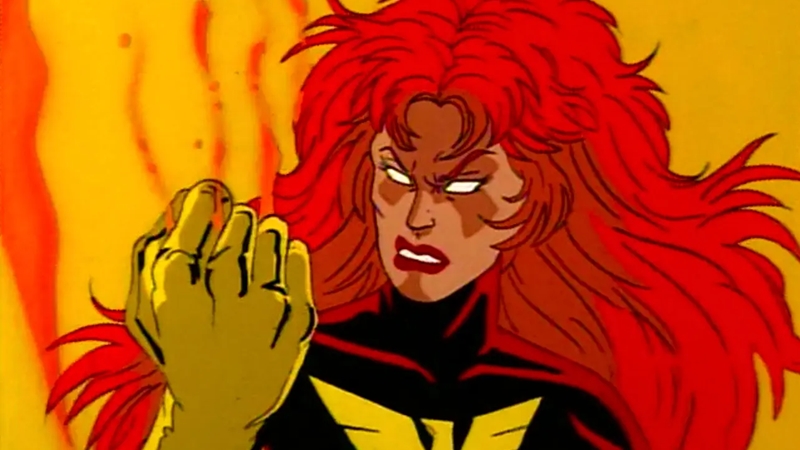
Episodes 14, 15, 16, and 17: The Dark Phoenix Saga
Most of the latter half of X-Men’s third season is dedicated to an adaptation of John Byrne and Chris Claremont’s The Dark Phoenix Saga. While gentler than its source material (the Dark Phoenix blows up an uninhabited solar system), “The Dark Phoenix” remains an impressively heavy piece of kid-targeted science-fiction superhero action. While the cosmic entity known as the Phoenix saved Jean Grey’s life when they worked together to save reality, it has grown addicted to the sensations and feelings that come with existing as Jean.
Between that addiction and a decidedly cosmic point of view, the Phoenix is vulnerable to a fall—a fall that the ruthless Hellfire Club Inner Circle is only too happy to engineer. To save existence, the X-Men must face off with one of their own, and with those who would prioritize existence over Jean’s life.
“The Dark Phoenix” is solid work all together, but personally, I lean slightly towards its lower key first half (“Dazzled” and “The Inner Circle”), where the X-Men face off with the Inner Circle. The former want to get Jean clear of the Phoenix. The latter want to manipulate the Phoenix into serving their will. Jean is looking for a way out. And the Phoenix? The Phoenix will not be constrained by anyone. Or anything.
Catherine Disher’s turns as the increasingly frenzied Dark Phoenix and the struggling-to-keep-it-together Jean are a highlight—as is Nigel Bennett’s oily hypnotist Jason “Mastermind” Wyngarde. The X-Men’s brawl with the Inner Circle makes creative use of their powers, and simultaneously emphasizes the overwhelming power of the Phoenix—power that, by virtue of its limitlessness, ensures the stakes can only get higher.
The Worst
Episode 19: Love in Vain
A potentially interesting set-up (Rogue reunites with the boy who she put in a coma with their first kiss, who has made a deal with the devil to be able to touch her) and one very fun design (a giant sapient star fish who serves as a living starship) cannot overcome a romantic plot that lacks context (Rogue’s beau Cody has no history beyond “wanted to kiss Rogue and still wants to kiss Rogue even if it means turning everyone into lizard-insect-cyborg creatures”) and sparks (he and Rogue are attracted in the script and the script alone) or otherwise hideous aesthetics (the alien Colony are overly busy, animated poorly, and don’t seem to match the script’s description of them as insectoid). Where “The Dark Phoenix’s” drama turned on the X-Men’s well-crafted care for Jean, “Love in Vain” tries to build tragedy on hollow gloom. Baffling, dull stuff.
Season 4
The Best
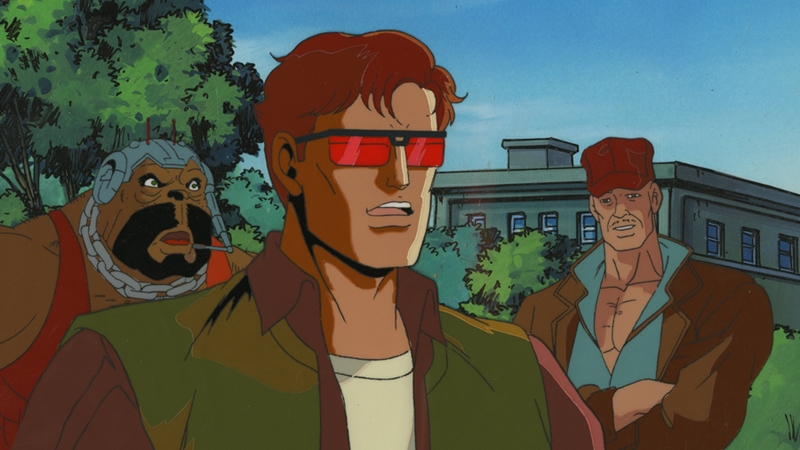
Episode 7: Secrets, Not Long Buried
Cyclops does Rio Bravo and/or Bad Day at Black Rock. Aside from being a fun refutation of the long-standing “Cyclops-is-a-boring-stick-in-the-mud” argument by pitting himself against an army with naught but his wits and his charisma, “Secrets, Not Long Buried” builds the X-Men’s world out in fun ways—with a pre-Xavier mentor of Scott’s who’s built a small, self-sufficient mutants and human community and a sneering bully who wants to claim its wealth for himself (down to pillaging the local mine for gold to build himself a giant statue of himself).
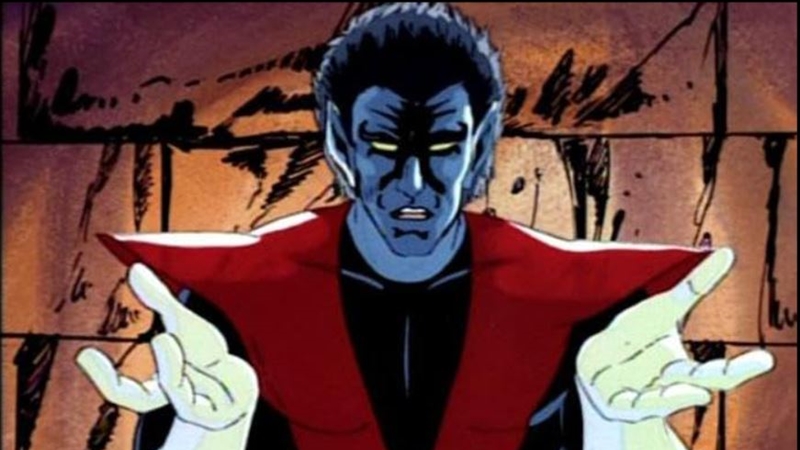
Episode 8: Nightcrawler
X-Men shines when giving its cast the opportunity to bounce of each other, whether they’re part of the core ensemble or a key guest, as is the case with Adam Hough’s take on the X-Men’s beloved, blue, fuzzy teleporter. Kurt Wagner’s introductory episode pits him against two foils—a bigoted monk who hides behind his faith where Wagner is guided by it, and Wolverine, who struggles with aimlessness and cynicism. On a macro level, Logan’s burgeoning friendship with Kurt feeds the former’s season-long questioning of his self and purpose—questioning that will eventually lead him to a degree of solace. On a micro level, using one of the series’ mainstays as a counterpoint gives Nightcrawler a strong foil to play off, enabling him to stand out immediately. He’s one of the most beloved members of the X-Men’s ensemble, and his turn here is worthy of that love.
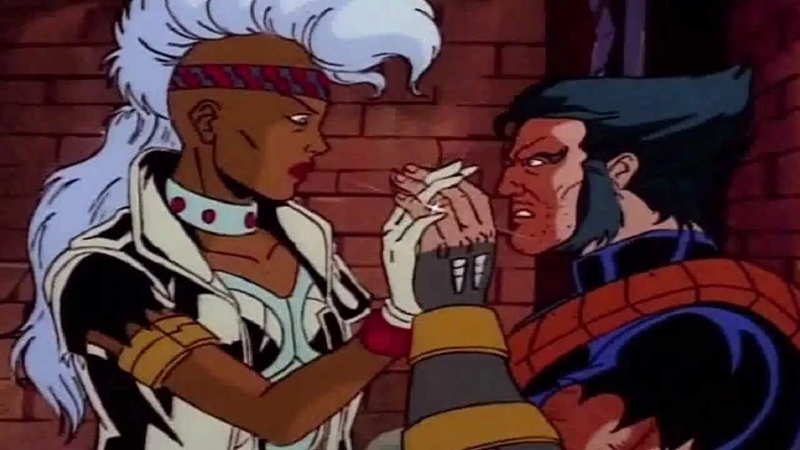
Episodes 9 and 10: One Man’s Worth
A loose adaptation of (or perhaps counterpoint to) the well-loved world-gone-sour X-Men story Age of Apocalypse, “One Man’s Worth” sees the time-traveling Bishop siblings (Lucas and Shard) join forces with a Wolverine and Storm who’ve dedicated their lives to fighting the endless armies of Master Mold, their only solace their love for each other. Their mission? To save Charles Xavier before he can be assassinated by Master Mold’s agents. Their prize? Knowing that there’s a world with more than constant, brutal warfare—even if it’s one where their love isn’t the romance that has been the best thing in either of their lives.
Alison Sealy-Smith and Cal Dodd have marvelous chemistry as the never-were heroes and lovers. Writers Richard Mueller, Bob Harras, and Eric Lewald’s script provides great support by making space for big, leave-it-all-on-the-field action. The alternate world set piece that introduces Wolverine, Storm, and Magneto is both thrilling and horrible to see. It also elevates character beats both loud (a Forge who’d been conditioned to serve Master Mold finding the courage his primary self carries) and quiet (Logan admitting that he doesn’t want to cease existing, but won’t turn his back on the mission that will lead to just that). Good, good stuff.
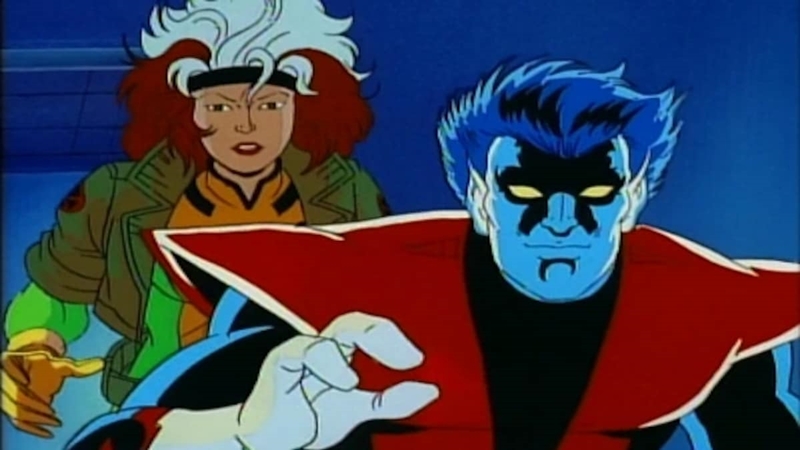
Episode 14: Bloodlines
Speaking of Nightcrawler, his second major appearance accomplishes the impressive feat of taking on one of the X-Men’s most infamously fraught family dynamics. It not only tackles it smoothly into twenty minutes, but captures the thorniness that makes it so compelling. Through his mother Mystique, Nightcrawler’s adopted sister is the X-Man Rogue and biological half-brother to the murderous bigot Graydon Creed. There is no happy ending here, save, perhaps for Rogue and Nightcrawler bonding over Mystique’s decidedly poor parenting. However, there is the possibility of understanding, and with it, acceptance. That’s a tricky landing to stick, especially when working with the broadcast restrictions of children’s television in the mid-1990s. “Bloodlines” sticks it.
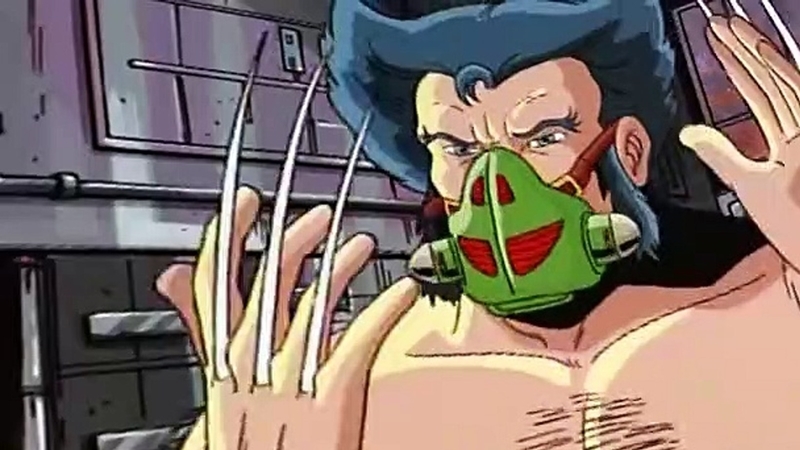
Episode 16: Weapon X, Lies, and Videotape
X-Men excels (no pun intended) when focusing on character work. “Weapon X, Lies, and Videotape” is a prime example of how. The episode sends Wolverine, Sabretooth, Silver Fox, Maverick and the along-for-the-ride Beast into a secret lab full of trauma triggers. The setting brings depth to Wolverine, pushing him out of his comfort zone to work with a former romantic partner. Even Sabretooth, who learned how to abuse a child from his father, gains some dimension. But is what they remember is actually real. From metafiction (recurring stock footage is revealed to be literal sets) to well-deployed oddness (the killer robot is oddly polite), the episode uses its form (children’s animation with a comparatively limited budget) to push its narrative in striking, memorable ways.
The Worst
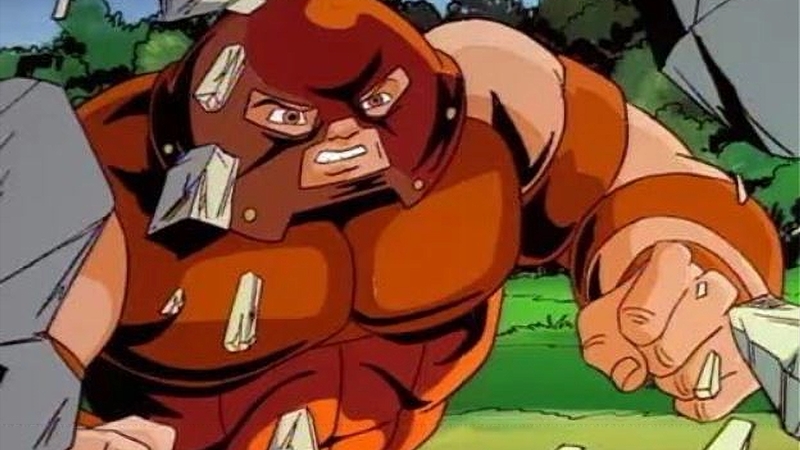
Episode 1: The Juggernaut Returns
“Bloodlines” and “Weapon X, Lies, and Videotape” gracefully balanced heavy personal storytelling with superheroic thrills. “The Juggernaut Returns,” on the other hand, tries to balance Professor Xavier’s fraught relationship with his vicious half-brother Cain Marko with a truly dire kid-friendly sex farce about an oily nerd who gains the power of Cytorrak and becomes unstoppable while remaining painfully dweeby. Major tonal gaps are not necessarily deal-breakers, but between the awful comedy and undercooked drama, “The Juggernaut Returns” is an exercise in irritation.
Season 5
The Best
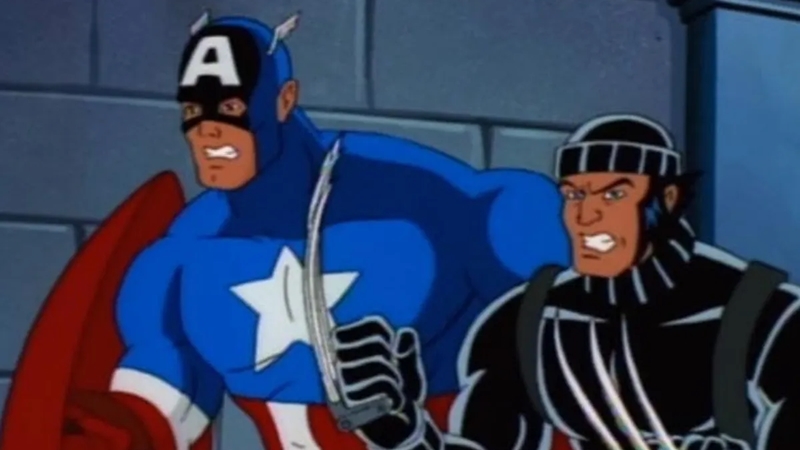
Episode 7: Old Soldiers
Written by Wolverine’s co-creator, writer Len Wein, Logan’s final spotlight episode teams him with Captain America in a World War II-era mission. The two are tasked with rescuing a French scientist from the clutches of the Nazis. The action, a Wolfenstein-esque assault on a Nazi castle filled with goose-stepping morons, giant robots and Red Skull, is strong. So is the character work in the framing device. Logan realizing a man he’d loathed for decades was in fact a deep-cover agent who successfully sabotaged the Skull’s assorted plots by playing the devoted servant makes for a lovely coda to Wolverine’s series-wide search for peace and self-acceptance.
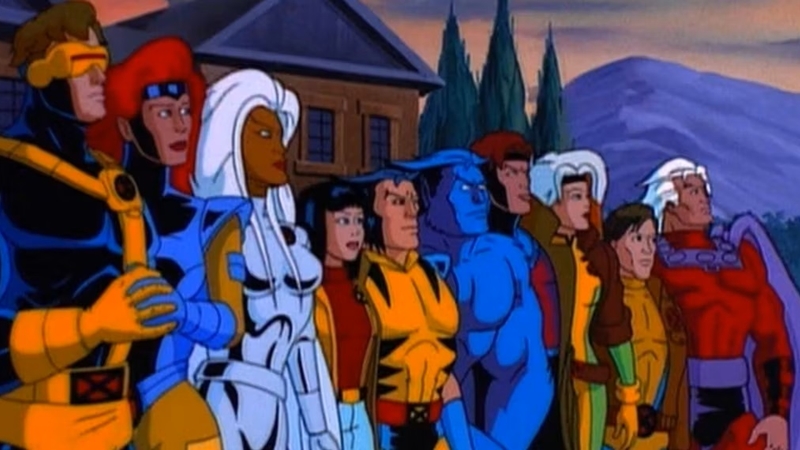
Episode 10: Graduation Day
The grand finale is a combination of baton-pass and book-closing. By the time the credits roll, the status quo is no more. Yes, mutantkind still faces bigotry and hatred. It is, after all, inevitable that some folks, be they baseline human or mutant, are just plain rotten. And yes, The X-Men still fight to protect the world and its people, caring for each other amidst their interpersonal issues. But Charles Xavier, while he still lives, will likely never return to Earth. And Magneto has changed, choosing his friend over his war on humanity when the chips were down. The world only spins forward, even for time-travelers like Bishop and Cable. It’s not a grand battle, but it’s a fitting one. Cedric Smith’s final monologue as Xavier is lovely, moving work.
The Worst
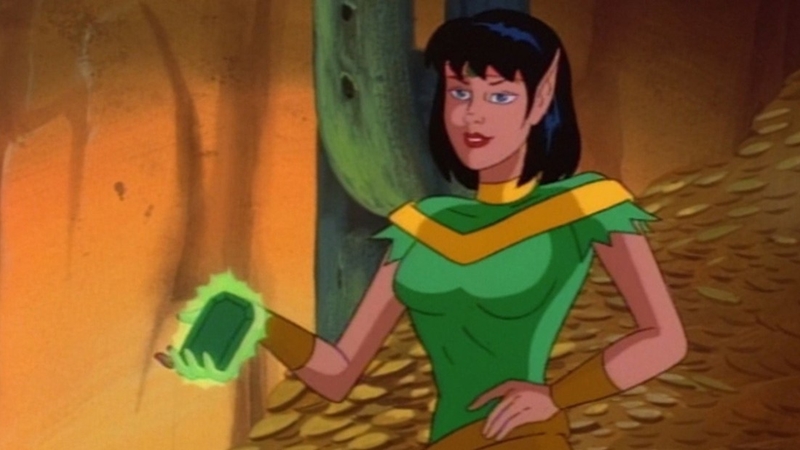
Episode 6: Jubilee’s Fairy Tale Theater
If I were being petty, I’d sum up “Jubilee’s Fairy Tale Theater” as the crummy predecessor to The New Batman Adventures’ “Legends of the Dark Knight.” But comparison only goes so far. The premise isn’t fatally flawed in and of itself. X-Men, after all, has space for baseball games, intergalactic adventures, superhero brawls, and dramatic weddings. Why not a hop over into high fantasy?
On paper, Jubilee serving as mentor to a group of kids should be a fun showcase of how she’s grown throughout the series. In practice though, it’s a clunky, annoying goof. It doesn’t do anything fun with the X-Men’s potential high fantasy counterparts. Gambit, the charming rogue is…a charming rogue. Wolverine is…a grouchy troll. Magneto is a generic evil king. Ultimately, the episode ends up an airless bore. At least “Love in Vain” and “The Juggernaut Returns” had baffling moments.
Every episode of X-Men: The Animated Series is available on Disney+ in the proper, intended order.